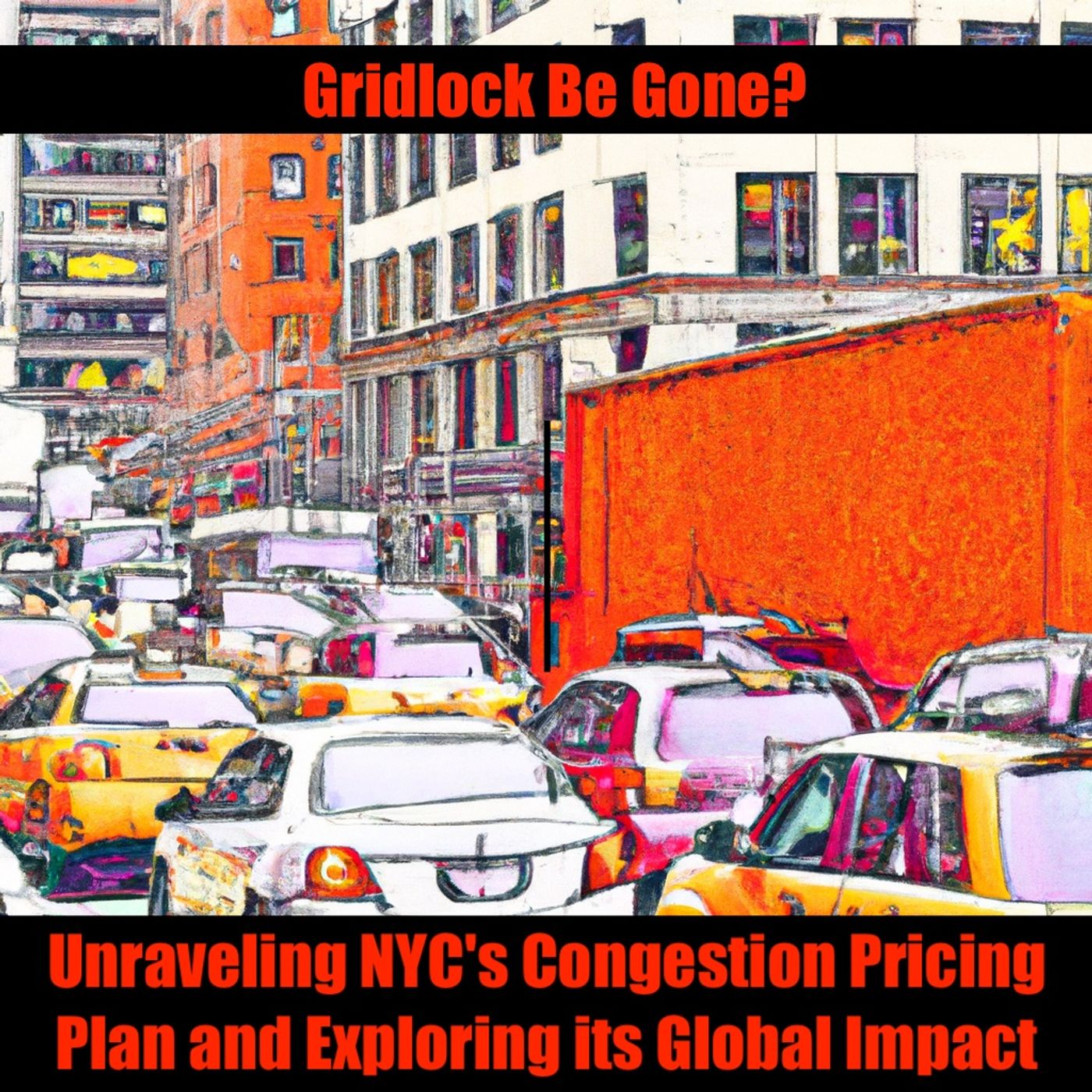Unraveling NYC's Congestion Pricing Plan
Description
In early 2024, an unprecedented new policy championed as a potential lifeline for New York City’s strangled streets will launch despite years of political clashes: congestion pricing tolls charging drivers to enter Manhattan’s central business district. Designed to cut traffic congestion while boosting struggling mass transit finances, the controversial move will test global assumptions about curbing car dependency in major metros. If the ambitious scheme succeeds, it could inspire an urban mobility revolution across America. But skeptics question whether the complex, cumbersome system can really slim chocking overcrowding without crippling commutes or deepening divides.
As installations take shape across 60th Street checkpoints, the next chapter in NYC’s transportation history dawns. Will pricing finally ease gridlock by making drivers consider alternatives? Or will political infighting, technical glitches and pandemic uncertainty turn congestion pricing into a boondoggle crushing working-class motorists? With the world watching, New York again becomes an urban laboratory gambling on innovation. The city’s economic vitality and quality of life hangs in the balance.
Why Congestion Pricing? Understanding the Historic Step
The central premise of congestion pricing rests on leveraging basic supply vs demand principles. By placing a premium on entering high-traffic zones, a portion of drivers supposedly decide avoiding charges makes more sense than absorbing fees to haul vehicles downtown. Even relatively small reductions in daily cars then create outsize cumulative impacts easing congested corridors for all. Early evidence from cities pioneering various pricing models confirms charging works better than building new roads endlessly devoured by induced demand.
In New York’s case, the acute crisis level traffic strangling economic productivity justifies unprecedented action. NYC ranks as America’s most congested metropolis, costing an estimated $20 billion per year in delays and pollution. Labyrinthine streets and aging infrastructure groan under 13,000 taxis, 80,000 rideshare vehicles including Uber and Lyft and a surging delivery truck presence thanks to Amazon and food delivery apps. Population and job growth further clog limited road capacity. And with the NYC region expecting 1 million additional residents by 2040, only bolder policies present hopes of avoiding total gridlock disaster.
Meanwhile the city’s decaying, underfunded subway system creaks under record ridership, sparking calls for dramatic changes before chronic delays and failing signals cause economic catastrophe. Linking congestion fees to transit upgrades earned support from politicians and wonks. But skepticism brewed alongside support from the start.
Roots of Modern Proposal
In truth, charging drivers in some form to access America's largest business district has arisen periodically for 50 years. As far back as Mayor John Lindsay in the early 1970s, multiple city studies and panels have mused congestion pricing might alleviate intractable jams. But auto industry lobbying might and outer borough middle-class unease torpedoed those early conversations.
By 2007 Mayor Michael Bloomberg’s administration formulated a congestion pricing framework to charge $8 for entering core Manhattan areas below 86th Street on weekdays while rebating bridge tolls and funding transit repairs with net revenues. Despite approval from the City Council and initial state legislature passage, political disputes doomed that bill amidst recession fears and resistance from suburban constituencies. Ever since, transit advocates pushed congestion pricing proposals during new mayoral administrations and Governor Cuomo’s terms before finally gaining serious momentum under current Mayor Eric Adams and Governor Kathy Hochul in 2021-2022.
Key Details of Approved Plan
Under language passed by the state legislature in Spring 2022,...
More Episodes
Congestion Pricing Goes Global: Lessons for NYC from Singapore, London and Beyond
As New York City gears up to join the modest club of major metropolises leveraging targeted tolls to tame intense traffic congestion, the impending launch inspires natural questions around how The Big Apple's...
Published 12/12/23
Published 12/12/23


